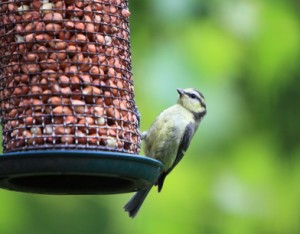 Placing bird feeders in your garden won’t make up for lost habitat, but a well-placed bird feeder can allow you to see wild birds up close and create an awareness of nature. Before purchasing or building a bird feeder, there are a few basic things to consider, including which birds to feed, how much seed you want to buy, and how much mess you can tolerate.
Placing bird feeders in your garden won’t make up for lost habitat, but a well-placed bird feeder can allow you to see wild birds up close and create an awareness of nature. Before purchasing or building a bird feeder, there are a few basic things to consider, including which birds to feed, how much seed you want to buy, and how much mess you can tolerate.
Which Birds do You Want to Attract?
Perhaps you were hoping for a “building it and they will come” bird feeder, but it’s important to make decisions about which birds to attract before purchasing or building a bird feeder and buying your first bag of birdseed.
Different birds have different preferences when it comes to food and what types of feeders they will use. For example, thistle seed is used in a thistle feeder and is especially attractive to American goldfinches and pine siskins. In terms of feeder types, some birds, such as chickadees and nuthatches, will use a feeder that is placed well above the ground, while other birds, such as sparrows and juncos, prefer to eat close to the ground.
Native vs. Non-Native Birds
When choosing which birds to feed, many people prefer native birds to non-native birds such as house sparrows and starlings. Non-native birds compete with native birds for food and nesting sites, so adding a bird feeder that will attract native birds will supplement their food sources.
Discouraging Aggressive Birds
Aggressive birds such as crows and pigeons can keep other birds from using a bird feeder. If you want to discourage aggressive birds from using the bird feeder, choose seeds to which they are less attracted. For example, grains such as barley, rye, oats, wheat and corn are particularly attractive to ground-feeding birds such as pigeons. Limit these grains if you want to discourage pigeons.
How Much Seed do You Want to Buy?
Some birds eat more than others and will really make a dent in your birdseed budget. Large birds, such as pigeons, can obviously put away more food than small birds. Other birds – such as starlings, finches, and house sparrows – travel in large numbers and will also eat much more birdseed than small birds like chickadees and nuthatches that don’t travel in large flocks.
How Much Mess Can You Tolerate?
Another important consideration when deciding which birds to attract is mess. Large flocks of birds, like those mentioned above, tend to make a mess because they come in large numbers and stay at a bird feeder for a long length of time. Other species, such as chickadees, jays and nuthatches, tend to visit a bird feeder, get what they want, and leave. If having a mess under the bird feeder is going to be a source of irritation, it’s best to attract birds that are less messy.
Watching birds come and go from a bird feeder in your garden can bring a lot of enjoyment. You may even start to notice birds feeding on the seeds of some of your garden plants. Maybe it will inspire you to add more bird feeders or a nesting box or two. In the end, know that whatever supplemental food you can provide will be appreciated by these small, feathered friends.
